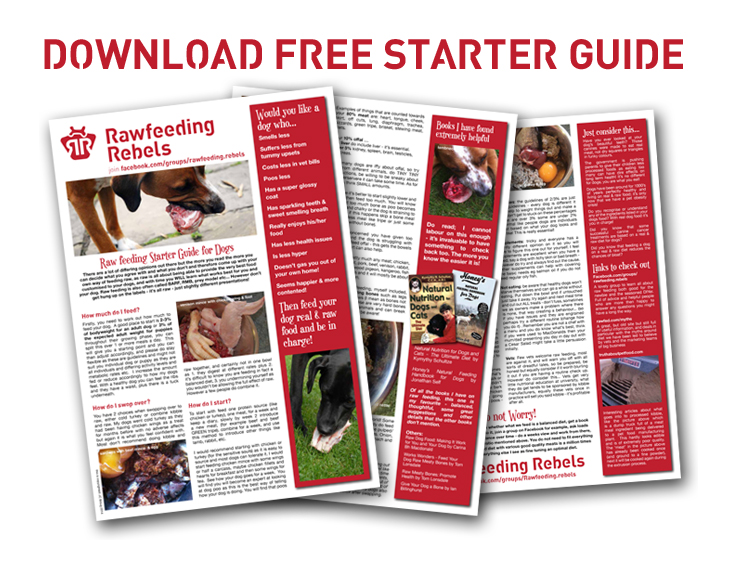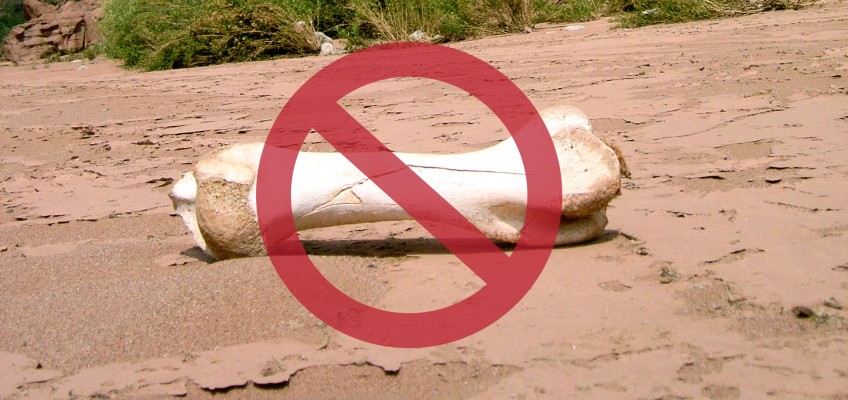When you are a newbie to raw – a rawbie – there are a few things, a lot of us experience when we start, which go slightly wrong!
It’s easy to make mistakes when you are a newbie to raw feeding (rawbie). Many of us make slight errors of judgement and are overly enthusiastic with the swap to raw.
1. Too much bone!
If you are not feeding pre-prepared minced meat, with minced bone included in the right quantities, then feeding bone “DIY” is where almost everyone goes wrong. Bone is only about 10% of the diet, and feeding too much can result in constipation, and the more serious “impactation”, which is when stools become completely stuck!
Some raw feeding models recommend feeding 30% bones – but they mean MEATY BONES, where there is more meat than bone! Raw meaty bones can be very difficult to source, unless you’re hunting in the wilderness. It’s also important to remember that all dogs have different bone tolerances. Some older dogs for example, can only cope with less than 10% bone. Likewise, ill or recuperating dogs, and those taking certain medicines, may find it difficult to deal with bone.
When you start feeding a raw diet, it’s therefore best to take it nice and easy, and start with small amounts of bone.
There are charts online which purport to give you a general idea of how much bone there is in eg. a chicken wing, or a duck carcass. HOWEVER, the bone content in such things can vary greatly, so DO NOT let that be your only guide. It can depend on the age of the animal when slaughtered, how it was reared and, how it was processed. Your guide with regard to bone is POO! You are after relatively small, firm, non-stick pellets, that are neither crumbly nor white, and your dog should not be straining to get them out. If you do have any of these things, then it’s a sign you need to lower the overall bone content in your dog’s diet.
Raw feeding is not about wanging a giant bone once a week in the back garden, and that’s it! It’s important to be more consistent with bone – start daily or every other day, and don’t give too much in one sitting. If your dog has constipation, or is straining, or has crumbly white poo, then have a boneless meat day and include some liver, kidney or heart.
Many raw feeders also steer clear of weight bearing bones, from bigger animals like cows, and also smaller ones like lamb leg bones. If you have just started raw feeding, then you should FIRST learn about your dogs individual bone tolerance, BEFORE you feed big bones. If you have some weight bearing or larger bones which you don’t want to waste, then you could for example make some bone broth with them.
2. Too much variety too soon! 
So there you are on day 3, and your dog is seriously loving everything, and you can’t wait to get to the supermarket or butchers to find bargains from myriads of different animals! DON’T DO IT! Stick with one protein for a while. Don’t introduce Noah’s Ark in week one – if you do, then your dog may well have serious splatters and a very unsettled tummy! Take it nice and easy with introducing new proteins, you have plenty of time. Think in weeks instead of days for introducing new proteins. Another benefit of feeding this way, is that if your dog is intolerant to a particular meat, then you will be able to find out what it is. If you have mixed everything up from the start, then you won’t be able to tell, and you would need to start again, introducing one protein at a time, to find out. [Starter Guide link]
3. Dogmatism!
Whilst it’s necessary to have a basic understanding of raw feeding BEFORE you start, it’s also very important to take time to find the perfect balance for your dog. You might be keen to make 7 day plans before you even start, if that helps, however you must stay flexible, because you are trying to find the best feeding regime for your individual dog. There are many guides to guide you, but they are not edicts, and no single diet will suit every dog.
4. Wrong Quantities!
It’s impossible to know in advance EXACTLY what the right quantity of food is for any individual dog. This is why feeding guidelines are just that! The key is to keep a close eye on your dog. If he or she is losing or gaining weight, the don’t be afraid to adjust the overall diet up or down. If your dog is becoming fat, then dealing with it is not a case of cutting out all fats from the diet, it’s about feeding less within an overall balanced diet. Fat is essential to dogs – for their brains, cell growth, and nervous systems, and our human ideas about weight loss are not easily transferred to our furkids.
6. Supplement Mania!
It’s very tempting for rawbies to use supplements too much and too soon, and it’s important to remember that supplements represent a dietary change for your dog, which can cause upset tummies, and the splatters, and such-like. Supplements are an endless road, and can seriously distract you from making the best raw start, making it all very complex. IGNORE SUPPLEMENTS until you have found your feet with the basic raw diet, as this is the most important thing. Then you can start to explore, and see what is of use for your dog.
7. Too little variety longer-term!
Variety is an important longer-term aim, so in the first few weeks of raw feeding, you should have introduced a variety of proteins. Don’t over-rely on just one, aim for 4 staple proteins, and look for others. For example, it’s good to include some “wild” meats, i.e. meat that has not come from intense farming.
Consider the meat you feed in relation to the animal it came from. For example, lambs do not consist of 50% heart, so don’t overfeed heart. The same goes for tripe, which is an excellent food, but don’t forget that dogs also need muscle meats, envisage the animal (the lamb, cow, chicken, etc) – that is perfectly balanced as a whole and consider what part of your particular meat cut makes up in their bodies to give you an idea. No cow is made up from 75% tripe.
Appropriate raw diets are trying to replicate the balance of nutrition which can be obtained from a variety of whole prey. Different meats, cuts and proteins, bring different things to the table in terms of nutrition (minerals, vitamins etc), so don’t put all your eggs in one basket, and aim for a measure of variety over the longer term.
8. Awful Offal!
Many rawbies don’t realise that offal, for example liver and kidney, are great bowel-movers. This is why it’s an important part of a balanced raw diet, and why you might feed a bit more of it if your dog is constipated. If you feed a lot of offal though, your dog WILL get the splatters, or at least extremely sloppy poo’s, so do be a bit cautious. Offal makes up only 10% of the diet but start with small amounts not a bowl. Heart, which is not classed as offal, is also an important part of a balanced raw diet, and also has a similar “bowel-moving” effect. More on offal…

